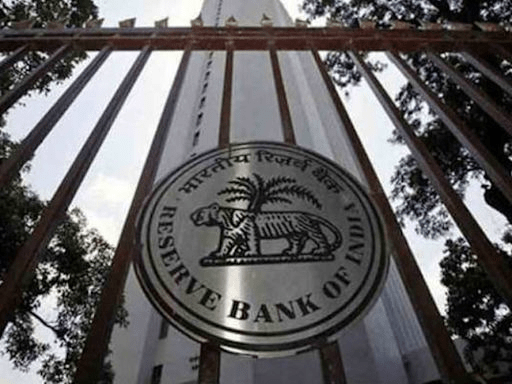Indian Express Editorial Analysis
24 February 2025
“RBI moves to boost credit flow to NBFCs, cut risk weight on loans”.
(Source – Indian Express, Section – The Ideas Page – Page No. – 17)
Topic : GS3- Indian Economy and issues relating to planning, mobilization, of resources, growth, development
Context
The Reserve Bank of India (RBI) has announced measures to improve credit flow to Non-Banking Financial Companies (NBFCs) by reducing risk weights on bank loans to them. This move aims to enhance liquidity, encourage lending, and support the broader economy. Given that NBFCs play a crucial role in last-mile credit delivery—especially to small businesses, rural borrowers, and micro-entrepreneurs—this step is expected to stimulate economic growth. However, concerns regarding financial stability and risk management remain.

Introduction
NBFCs serve as the backbone of India’s financial ecosystem by bridging credit gaps in sectors underserved by traditional banks. They cater to MSMEs, retail borrowers, and infrastructure projects, contributing significantly to economic growth. However, liquidity constraints and regulatory curbs in recent years have hindered their lending ability. To address this, the RBI has reduced the risk weight on bank loans to NBFCs, making credit cheaper and more accessible. While this move is expected to provide relief, it also raises concerns about asset quality and financial discipline.
Why the Move was Necessary?
1️⃣ Liquidity Stress in NBFCs
- Many NBFCs have been struggling with high borrowing costs, limiting their ability to lend.
- The IL&FS crisis (2018) and subsequent defaults by DHFL and other shadow lenders led to a liquidity squeeze.
- The pandemic further weakened credit demand, forcing NBFCs to depend on high-cost borrowings.
2️⃣ NBFCs’ Role in Economic Growth
- NBFCs account for 25% of total credit in the economy, serving small businesses, rural borrowers, and infrastructure projects.
- They play a critical role in financial inclusion, offering credit to those who lack access to formal banking.
- Sectors like housing finance, vehicle loans, and MSMEs heavily rely on NBFC funding.
3️⃣ Stimulating Bank Lending & Economic Growth
- Lower risk weights mean banks can allocate more funds to NBFCs, increasing credit flow.
- The move reduces borrowing costs for NBFCs, allowing them to offer loans at lower interest rates.
- It aligns with the government’s goal of supporting MSMEs and consumption-driven growth.
Understanding the Risk Weight Reduction
📉 What does it mean?
- Risk weight determines the capital banks must set aside for each loan.
- Lowering it means banks need to hold less capital, making lending to NBFCs more attractive.
- The move frees up capital, enabling banks to lend more without breaching capital adequacy norms.
⚠️ Potential Risks Involved
- Risk of Over-Lending: Easier credit can lead to reckless lending and future NPAs.
- Asset Quality Concerns: NBFCs with weak financials might misuse cheap credit, leading to defaults.
- Regulatory Oversight Needed: While boosting credit is essential, maintaining financial stability is equally important.
Global Perspective: How Other Nations Handle NBFC Regulation
| Country | Approach to NBFC Regulation | Impact |
|---|---|---|
| US | Stronger capital norms, higher regulatory oversight | Reduced systemic risks but limited NBFC growth |
| UK | Risk-based supervision, tighter liquidity norms | Stable NBFC sector with moderate growth |
| China | Strict lending curbs, focus on state-backed financial firms | Avoids risky lending but limits private sector NBFCs |
| India (Now) | Relaxed risk weights, improved credit flow | Boosts NBFC lending but raises risk concerns |
Economic & Financial Implications
✅ Positive Impacts
🔹 Boost to MSME & Retail Lending: Easier access to credit can accelerate growth in small businesses and rural sectors.
🔹 Improved Liquidity for NBFCs: Lower borrowing costs help NBFCs expand lending portfolios.
🔹 Revival of Consumption & Investment: More affordable loans can fuel spending, especially in housing and automobiles.
⚠️ Challenges & Risks
❌ Moral Hazard & Over-Leverage: NBFCs may take excessive risks if lending norms are too lenient.
❌ Rising NPA Concerns: If loans are given without due diligence, default rates could rise.
❌ Regulatory Oversight Needed: The RBI must balance growth with financial stability.
Way Forward: Ensuring Stability While Boosting Growth
✔ Stronger Supervision on NBFCs: The RBI should monitor credit flows to avoid excessive risk-taking.
✔ Encouraging Responsible Lending: Banks and NBFCs must prioritize asset quality while expanding credit.
✔ Boosting Credit Rating Mechanisms: Improved risk assessment will ensure only financially sound NBFCs benefit.
✔ Aligning with Long-Term Economic Goals: Credit growth should be sustainable and support productive sectors like MSMEs and infrastructure.
Conclusion
The RBI’s move to cut risk weights on bank loans to NBFCs is a significant step towards improving credit flow and economic growth. While this will boost lending and liquidity, it also raises concerns about financial prudence. A balanced approach—where credit expansion does not compromise asset quality—will be key. If proper risk management frameworks are enforced, this reform can help NBFCs thrive, leading to stronger financial inclusion and economic development.


